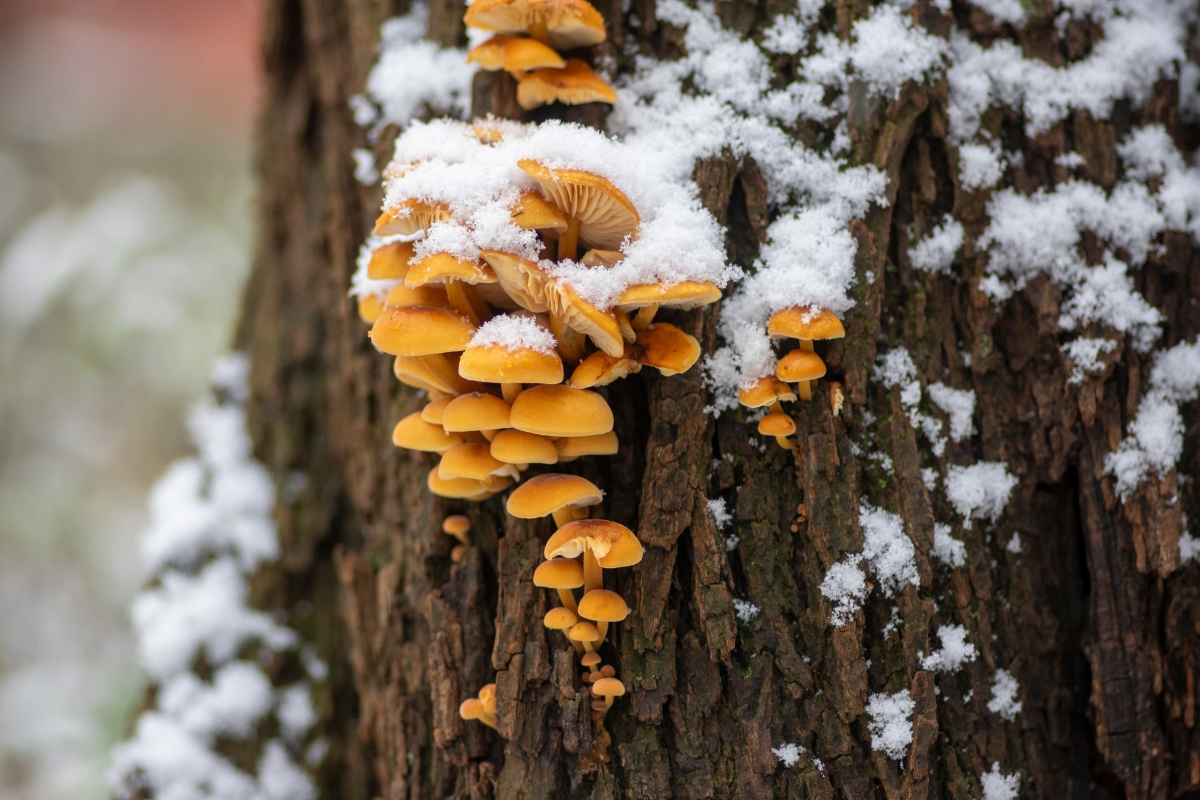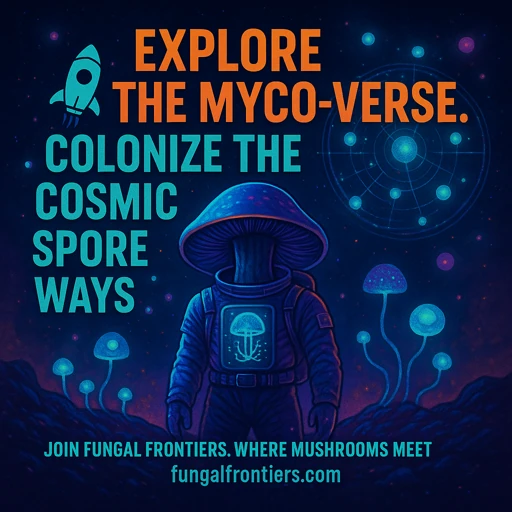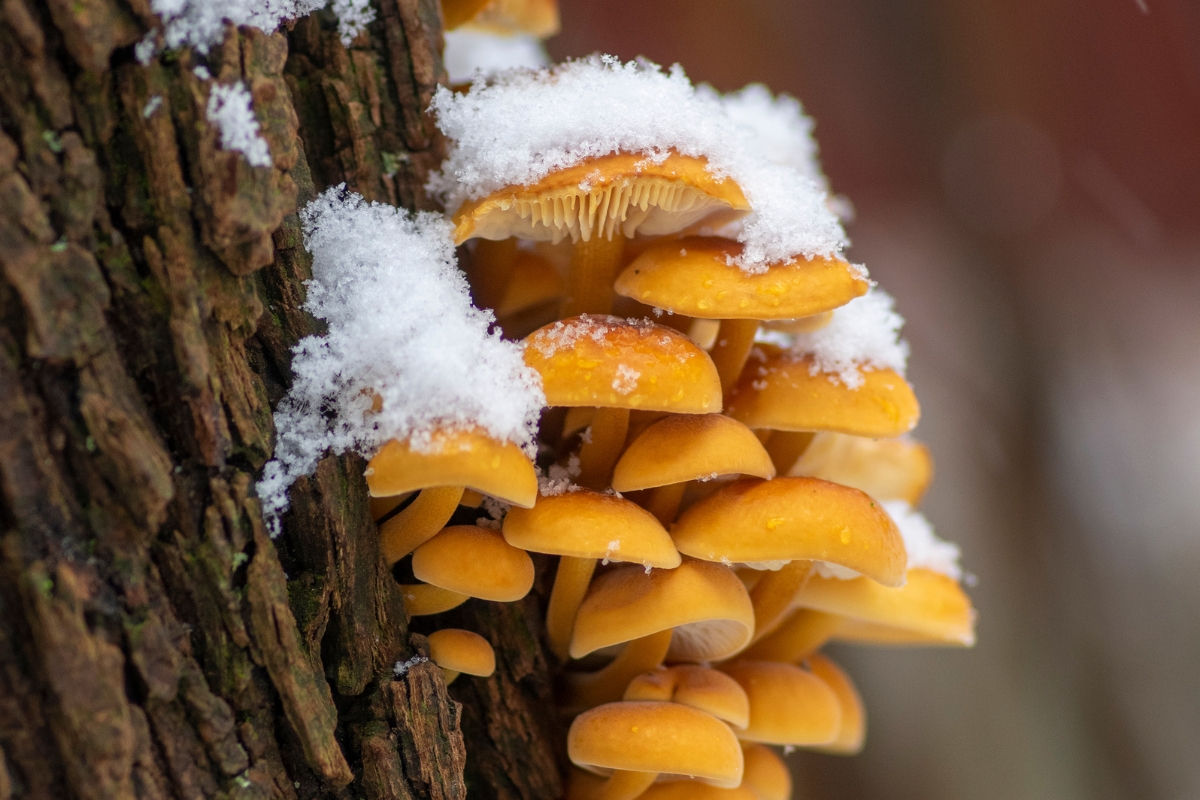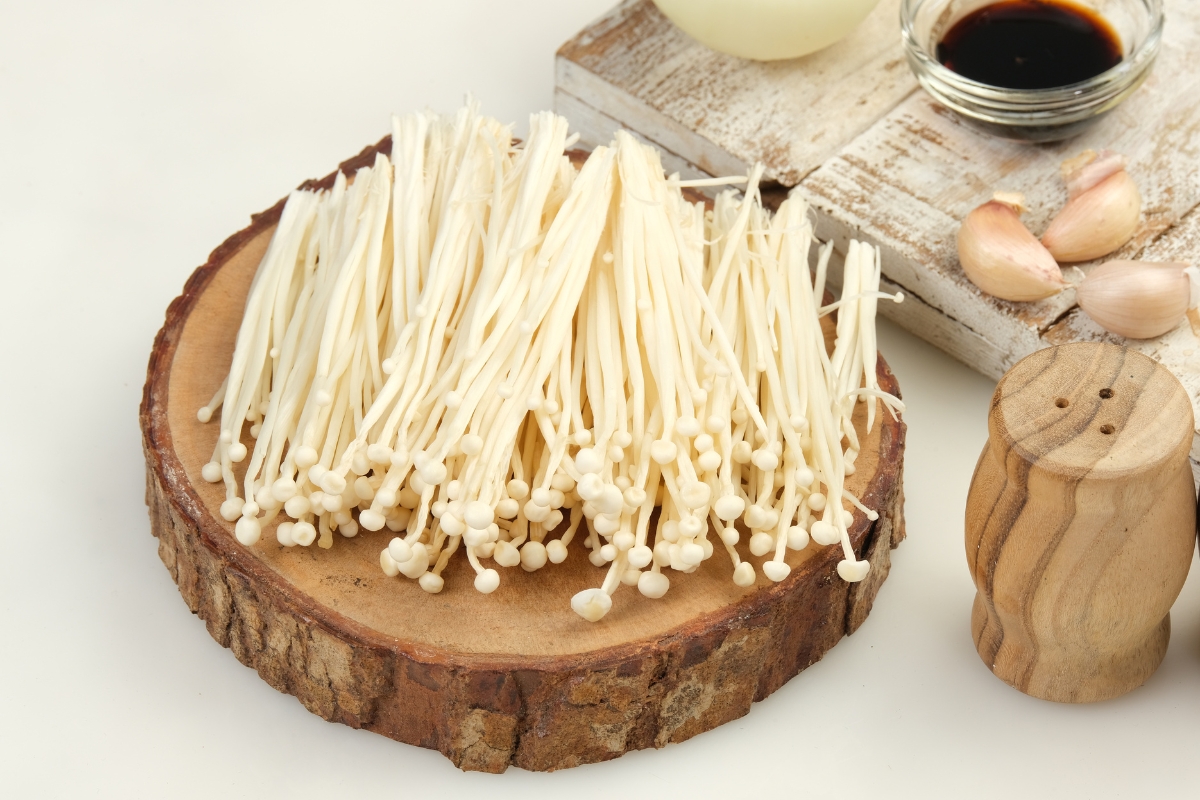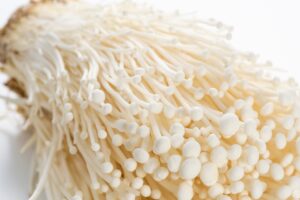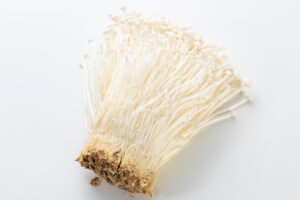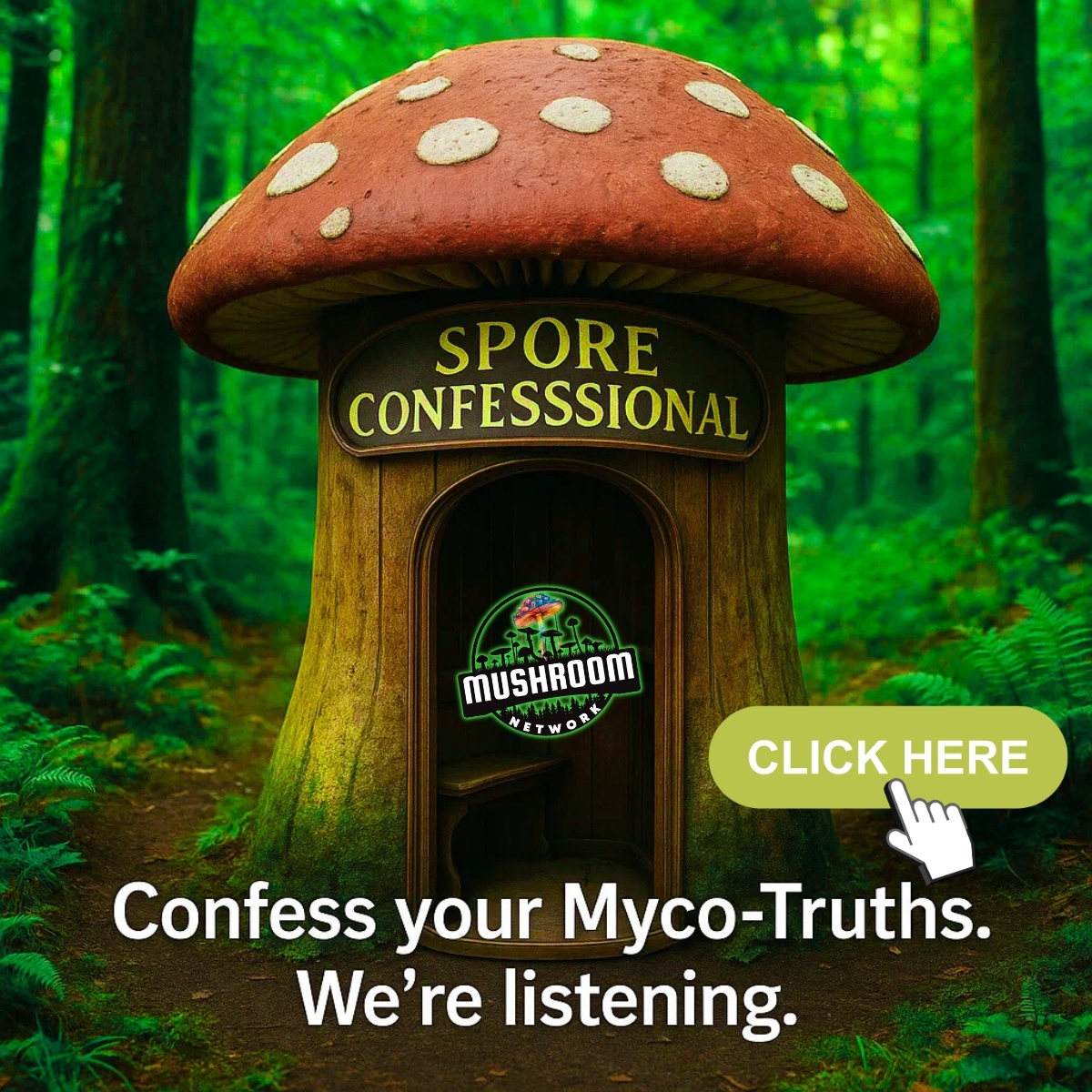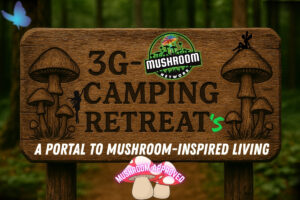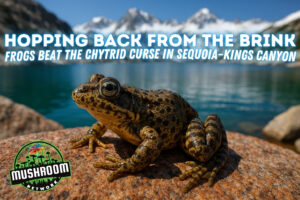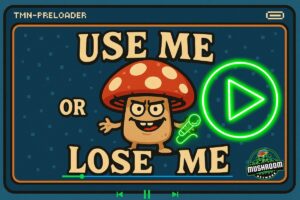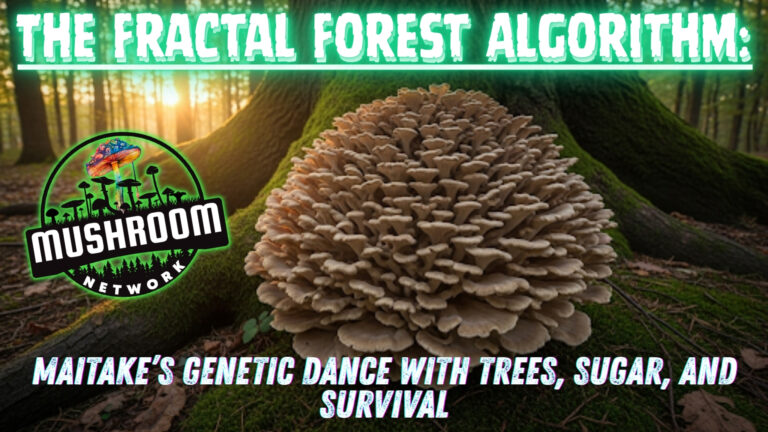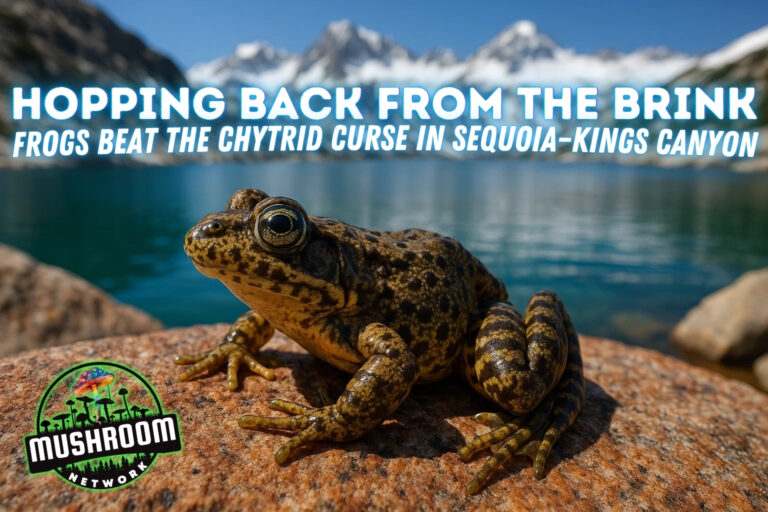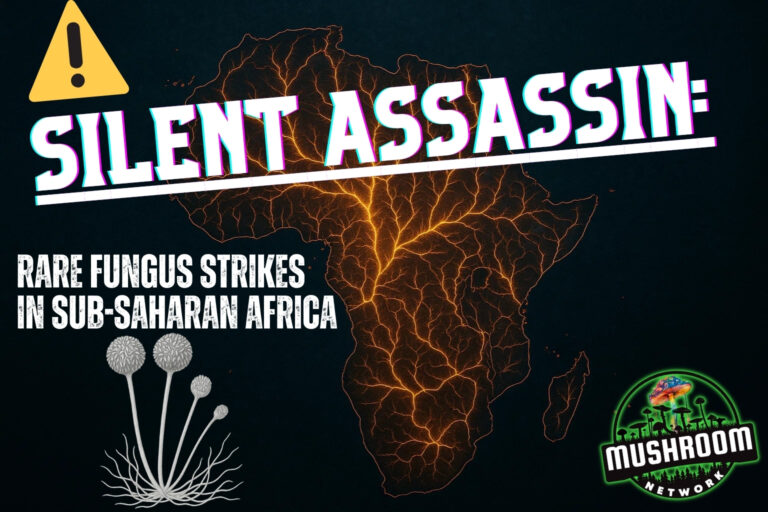❄️ The Cold-Born Shroom: How Enoki’s Genetics Thrive in Freezing Darkness
🥶 Frost-Coded Mycelium: Enoki’s Arctic Genetic Superpowers Unveiled
Buckle up, Myco-Wanderer. We’re diving into the frost-coded fungal genetics of Enoki—yes, that long, noodle-like mushroom in your ramen. But don’t let its skinny frame fool you. Beneath that ghost-white stem is a mutant power born from cold darkness, lab manipulation, and cell-apoptosis wizardry. Learn how Enoki’s genes adapted to thrive where other fungi freeze, and why researchers are obsessed with its potential to ice cancer cells from the inside out.
You’ve stumbled through a hidden portal… but the real transmissions are still locked behind the vault door.
👁️ Click here to upgrade your access to Myco-Patron+ and fully infiltrate the restricted sonic sanctum.
Just... don’t tell the AI-fungi in Sector 8.
You’ve found the doorway—but haven’t stepped fully through.
The Temple only reveals its true sound to the fully initiated.
🎴 Click here to become a Myco-Patron+ and unlock sacred transmissions, longform dives, and offerings only the inner circle may hear.
The spores chose you for a reason.
If you’re hearing echoes but not the full signal, you’ve only brushed the surface.
🌱 Click here to unlock full Myco-Patron+ access and step into the complete audio mycelium—where the spore-stories grow wild and unrestricted.
You’ve found the doorway—but haven’t stepped fully through.
The Temple only reveals its true sound to the fully initiated.
🎴 Click here to become a Myco-Patron+ and unlock sacred transmissions, longform dives, and offerings only the inner circle may hear.
You’ve found the doorway—but haven’t stepped fully through.
The Temple only reveals its true sound to the fully initiated.
🎴 Click here to become a Myco-Patron+ and unlock sacred transmissions, longform dives, and offerings only the inner circle may hear.
☃️ Spores from the Fridge: Enoki’s Frozen Code
Imagine a mushroom born in the snow—its DNA wrapped not in warmth, but in winter. That’s Enoki (Flammulina velutipes), the long-stemmed legend of both culinary and clinical fame. Often mistaken for a soggy bean sprout at the bottom of your soup bowl, this cold-adapted fungus is secretly flexing genetic powers from a frostbitten Myco-Verse. It fruits in low light and near-freezing temps, which triggers gene expressions most mushrooms can’t even whisper about. In the wild, it’s golden-orange and curvy. But in the lab, stripped of light and grown like a vampire, it turns ghost-white with eerie precision.
This isn’t just a mushroom. It’s a cryo-biohacker with a degree in apoptosis. The same mechanisms that let it thrive in darkness might help destroy cancer cells. So pull up a chair, Cosmic Traveler—we’re defrosting the secrets of a mushroom that shouldn’t be alive… and yet somehow might save yours.
🌨️ Sub-Zero Spores: How Enoki Turns Cold Into Code
Cold-Adaptation Isn’t a Bug—It’s the Feature
Imagine you’re a mushroom spore drifting through the cosmic wood-wide web of time, and suddenly—BAM!—winter hits. Most fungi hit the snooze button and go dormant. But not Enoki. Oh no. Flammulina velutipes is that winter-born weirdo who hears “below freezing” and says, “Now’s my time to SHINE.”
In fact, Enoki doesn’t just survive the cold—it demands it. Temperatures below 10°C (50°F) are the fungal password that unlocks its genetic treasure chest. Like some cryptographic spore cipher, these chilling cues activate a whole cascade of genetic commands. Scientists have observed upregulation of genes responsible for thickening the cell wall (kind of like putting on a cellular snowsuit), ramping up antioxidant production to shield it from cold-induced oxidative stress, and synthesizing antifreeze protein analogs. That’s right—miniature molecular snowplows that keep cellular ice from turning the mushroom into a frosty pancake.
So while most organisms would be screaming “hypothermia,” Enoki is out here ice-skating across the genome, throwing a full-on transcription party in its DNA.
Fruiting Darkness—A Genetic Anomaly
But the cold isn’t the only key to Enoki’s strange success. Flip off the lights, and you don’t stifle Enoki—you turbocharge it. This spore-stronaut is one of the few mushrooms that responds positively to complete darkness during development. Most fungi use light as a go-time signal for primordia formation and fruiting body coordination. Not Enoki. It whispers: “No light? No problem. Time to get weird.”
This phenomenon is called a photomorphogenic reaction—basically, Enoki switches to dark-mode like a 3AM doom-scroller. The result? Insane stem elongation, reduced cap formation, and that iconic noodle-like aesthetic you see packaged in grocery stores. It’s not just a style—it’s a growth strategy. In darkness, the fungus prioritizes rapid vertical growth, possibly as an ancient foraging mechanism to breach leaf litter and reach hypothetical light that never comes. Lab strains have leaned into this trait, selectively breeding it like a spore-sculptor shaping the perfect ghostly tendril.
So yes, Myco-Wanderer. Enoki is a genetically goth, cold-loving mushroom that thrives where most would flinch. A fungal rebel born in the frost and sculpted by shadow.
Cryo-Lab Cultivars: The Long-Stemmed Lie?
And now, let’s spill some mycelial tea. Those long, white, slender Enoki mushrooms bundled up in grocery store packaging like albino spaghetti? That’s not nature’s original recipe. That’s a cryo-cultivar—lab optimized, genetically selected, and aesthetically manufactured.
Wild Enoki looks like its edgy cousin: stubby brown stems, firm caps, and growing proudly from decaying hardwoods. It’s like the difference between a street shaman and a corporate wizard—same origin, different spellbooks.
Farmed Enoki is produced under strict conditions—cool temps, high humidity, and total darkness. These environmental controls suppress cap development and stretch the stem, creating the eerily uniform look that modern markets crave. But in doing so, we’ve essentially erased the mushroom’s true personality. We’ve turned a frost-hardened forest warrior into a glowstick-thin party goer that wouldn’t last a second in the wild.
The irony? That long, silky-stemmed elegance that foodies swoon over was never meant for the forest floor—it’s a fungal Frankenstein built for shelf life, not survival.
🧪 Enoki vs. Cancer: Apoptosis in Action
Flammutoxin—The Quiet Assassin
Forget Hollywood toxins that explode cells like action movie villains. Flammutoxin is more Kill Bill than Rambo. This protein—found tucked into the inner sanctum of Flammulina velutipes—is a trained apoptotic specialist. When certain cancer cells encounter it, they don’t get roasted or obliterated—they get whispered instructions to quietly fall on their own sword. “Deactivate your nucleus. Begin autolysis. This message will self-destruct… you.”
Research teams have observed flammutoxin initiating apoptosis in leukemia cells and gastric cancer lines. It doesn’t blow holes through membranes. It pulls the right intracellular strings—like a biological black-ops team executing a covert mission behind enemy mitochondria.
And the best part? Unlike chemotherapy, which sometimes feels like setting your entire immune system on fire and hoping the cancer dies first, flammutoxin is specific, subtle, and surgical. It’s the kind of agent the Grand Cosmic Mycelial Network would send if it wanted someone gone… respectfully.
Polysaccharides & β-Glucans: The Immune Whispers
If flammutoxin is the ninja, then Enoki’s β-glucans are the generals. These complex polysaccharides are like encrypted myco-code that speaks directly to your immune network’s command chain.
What do they say? Not “attack everything.” Instead, they whisper: “Here’s what’s off… balance it.” That’s the secret sauce. Enoki doesn’t rev your system into an autoimmune overdrive. It modulates. It recalibrates. It enhances macrophage detection, tunes T-cell behavior, and boosts NK (natural killer) cell alertness without inciting a cytokine riot.
This is why for decades, Enoki extracts have earned a quiet but loyal place in Japan’s and China’s integrative oncology toolkits. They’re not miracle mushrooms—they’re performance coaches for your immune team. Studies have even shown increased antibody response and post-chemo resilience in patients using Enoki-derived immunomodulators. We’re talking real results—not magic, but molecular mentorship.
Myco-Medicine or Hype?
Let’s be clear, Cosmic Traveler—no mushroom should ever be your only shield in a cancer battle. But as part of your immune support squad? Enoki may just be the fungal field medic you didn’t know you needed.
Early studies are promising: apoptosis induction, immune tuning, gut microbiome interaction, even antiangiogenesis (the “starve-the-tumor” trick). It’s the difference between loud medicine and wise medicine.
And here’s the kicker—Enoki’s most healing power may lie not in aggressive action but in subtle support. In the fungal world, resilience isn’t brute strength. It’s adaptability, quiet persistence, and timing. Enoki waits in the cold, speaks softly to your cells, and still gets the job done.
So the next time someone scoffs at that pale cluster of long-stemmed noodles in your ramen? Just smile and say, “Yeah, that’s a mushroom assassin, immune tactician, and genetic whisperer. Want some?”
🌡️ Genetic Lessons from the Chill
Biohacking with Fungal Frost
Some mushrooms just decompose logs. Enoki reprograms the biohacker’s rulebook.
This cold-thriving mushroom has become the darling of geneticists not for what it grows on—but how it thrives under pressure. The moment temperatures drop below the comfort zone, Enoki’s genome lights up like a molecular rave. Genes switch on that encode for cold-shock proteins, antifreeze-like peptides, and cell-reinforcing compounds that keep membranes stable in icy chaos.
Researchers are now mining these myco-cold codes to create synthetic antifreeze proteins for everything from organ cryopreservation to refrigerated vaccines and winter-hardy crops. Imagine wheat fields in Siberia shrugging off frost because they’ve been spore-blessed with Enoki’s thermotolerant secrets. It’s not just biotechnology—it’s fungi-fueled thermal futurism.
Deep-Space Myco-Blueprints
Now let’s toss this conversation into the void—literally. When planning Martian greenhouses or Europa survival domes, fungi are the first recruits that make it through astronaut bootcamp. And cold-loving species like Enoki? They’re rockstars of the myco-mission.
Why? Because in space, everything is extreme. Low pressure. Low light. High radiation. And yeah… it’s cold as a necrotic necropolis. Enoki doesn’t just tolerate this—it prefers it. Its light-optional, cold-preferred growth profile makes it a prime template for engineered life support ecosystems.
Imagine growing Enoki in a hydroponic dome beneath the ice crust of Enceladus. Not just for food—but for medicine, water recycling, oxygen generation, and psychological support (because nothing says “don’t go mad on Titan” like sautéed fungal noodles and genetically upcycled antidepressant polysaccharides).
Space mycology isn’t a sci-fi dream anymore. It’s a fungal blueprint transmitted through the Grand Cosmic Mycelial Network. And Enoki is leaving frost prints across the stars.
Survival Isn’t Warmth—It’s Adaptation
Enoki doesn’t resist the cold—it becomes the cold.
Let that one ferment in your cerebrum a second, Myco-Wanderer. Because here’s the sacred fungal lesson: thriving isn’t about avoiding discomfort. It’s about rewriting your operating system in real time.
Enoki could’ve withered in winter. Instead, it evolved to require it. Where others saw death, it saw development. While we wrap ourselves in metaphorical blankets, Enoki stretches toward the surface in total darkness, no spotlight required.
It doesn’t rage against winter—it sings with it.
And maybe that’s the true mycelial mantra buried in its stem: when the world grows colder, quieter, darker… don’t shut down. Stretch taller. Adapt deeper. Grow longer toward the unknowable sky, even if you never see the sun.
Because survival isn’t warmth—it’s transformation.
🌟 MycoTip the Network! 🌟
themushroomnetwork@vipsats.app
🌀 Myco-Conclusion: 💫 Mycelium in the Icebox of Possibility
There’s something poetic—maybe even cosmic—about a mushroom that only reveals its full power when the lights go out and the world gets cold. Enoki isn’t trying to be flashy. It’s not a psychedelic showoff or a glowing forest sentinel. It’s the quiet genius in the back of the lab, silently unlocking codes to apoptosis, frost adaptation, and biotech futures. A fungal whisperer teaching cells how to gracefully self-destruct, immune systems how to fine-tune, and scientists how to reprogram survival itself.
But beneath that quiet is a code older than civilization—a reminder that evolution doesn’t reward loudness. It rewards timing. It rewards resilience. It rewards the organism humble enough to say, “The dark is not my enemy. The cold is not my cage. They are my medium.”
So next time you see those spindly stalks in your soup, salute them. They’re not just food—they’re bioengineering masterworks whispering fungal wisdom through every bite. They’ve survived glacial ages, low-light decay cycles, and human domestication—all while keeping their core magic intact.
What else might flourish in your own darkness, Spore-Seeker?
What truths wait to fruit when you embrace your inner winter?
Stretch, even when it’s silent. Grow, even when it’s unseen. The Grand Cosmic Mycelial Network is watching—and it knows that some of the strongest spores bloom when the world turns cold.
Suggested Myco-Articles For You:
Zombie Ants in Space? The Cordyceps Invasion Begins
Cordyceps is not your chill adaptogen. It’s a mind-controlling fungal parasite with a flair for drama—and potentially, a future in off-world colonization. This real-life zombie fungus hijacks insect brains, erupts from their bodies, and uses them as mobile spore-launchers. Scientists are exploring its properties for medicine, warfare, and even terraforming....
Read More...3G-Camping Retreats: A Portal to Mushroom-Inspired Living
If mycelium hosted a camping retreat… it would be this.
Read More...🌿 Hopping Back from the Brink: Frogs Beat the Chytrid Curse in Sequoia–Kings Canyon
For decades, chytrid fungus (Bd)
Read More...Pixelated, Glitched, and Fully Awake: The Song That Presses “Start” on Your Real Life
Are you buffering through life while waiting for your moment? “USE ME OR LOSE ME” is The Mushroom Network’s latest sporecore-glitch anthem—and it’s screaming for you to log back in. Beneath the pixelated trap beats lies a cosmic call: use AI wisely, wake up from autopilot, and don’t become a...
Read More...Myco-Article v1.0.4
How sporetacular was this post?
Tap a star to send your spores of approval (or helpful feedback!)
Oh no! The spores missed their mark…
Let’s co-create a sporetacular post together!
Share your wisdom—how can we make this more Cosmic?


